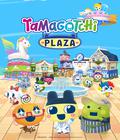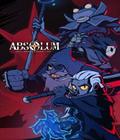
Genre: Puzzle
Publisher: Namco
Developer: Namco
Release Date: October 26, 2004
Buy 'TAIKO: Drum Master': PlayStation 2
 In Japan, "Taiko" is a music form played with the Taiko drums, which are played at festivals and are the center of attention. The drum masters endure long hours of nonstop playing, and we can now experience a sample of these Japanese festivities in our very own homes with Namco's rhythm game, Taiko no Tatisujin, better known as Taiko: Drum Master in our neck of the woods.
In Japan, "Taiko" is a music form played with the Taiko drums, which are played at festivals and are the center of attention. The drum masters endure long hours of nonstop playing, and we can now experience a sample of these Japanese festivities in our very own homes with Namco's rhythm game, Taiko no Tatisujin, better known as Taiko: Drum Master in our neck of the woods.
Rhythm games have become popular over these past few years, thanks to the large success of Konami's Dance Dance Revolution, but Konami has several other games that have yet to reach home consoles, like Drummania, where you play drums to a beat. Sound familiar? A Taiko drum isn't like one typically seen in a rock concert because it is just a single drum instead of a drum set. Taiko's gameplay resides solely on the pressure and the method with which you hit the drum, and this is where the skill comes to play.
The drum can only make a certain amount of noise, and Namco's Taiko has implemented that well, you can hit the center producing a thump sound, the edges for a light tap sound, a large thump by hitting the center with both sticks, a large tap by hitting the outside ring with both, and lastly, a drum roll. This is represented in the game as red circle for thump, blue circle as tap, big red circle for large thump, big blue circle for large tap, and continuous red and a foot-shaped pedal for drum roll. The use of these beats is what differentiates a good Taiko master and a wannabe. Mixing these together well and producing the correct sounds can create wondrous results, but mistime it, and it can sound quite horrendous.
The songs that should be in this game are classical Japanese songs, or at very least, songs that are more closely tied with Japanese music because Japan is the country from which the art of Taiko hails. However, most developers think that games won't sell if not localized enough, so our release featured licensed rock/pop hits like "Lady Marmalade," "Toxic," and "Tubthumping." While these songs are nice, they just don't create the appropriate atmosphere. Luckily, you also have the option of selecting "Namco Originals" tunes, which better suit the game.
I have also played the Japanese equivalent of this game, Taiko no Taitsujin: Atsumare! Matsuri Da!! Yondaime, and the available modes in both are identical, with mini-games and arcade play. The Japanese version, however, did have a few songs that I really wished had made it into the US release, like the Naruto song. The song list isn't all that bad, but I just think it could have used improvement because I had heard the better version. What is really horrid is the new voice for the Taiko drum guy, who leads you through the menus and serves as a cheerleader of sorts. Since the game doesn't use a credit system, the Taiko drum guy constantly talks when you select a song, but unfortunately, we are not given the option to change his voice. Unliked DDR, you can play this game for 24 hours straight and never have to exit to the menu, instead of being forced to do so after a predetermined number of songs. I can really appreciate this system because you can now play for a longer amount of time or until your arms drop, without being forced to exit out to the main menu screen.
The US version is currently only sold with the Taiko Drum, and this little accessory is pretty hot. It's a little drum with six buttons: left side thump, right side thump, left side tap, right side tap, select and start, which is easily understandable after a few rounds of play, especially if you play on the easy levels. There are a total of four difficulty levels: easy, normal, hard and oni. Make sure you truly understand the Taiko Drum before attempting the harder levels because in Oni, some songs are insanely hard. You must learn to hit the drum at its most sensitive points, which I found to be the top left and right taps, and to avoid the center for the thumps. It seems that there are dead zones at left and right rims, and middle section of the drum. Once you understand that, passing songs is an ease. The game comes with a controller, but you can still play with the regular dual shock controller, although that takes away the fun of the game.
If you happen to get blisters, which my roommates got from overplaying, you should head on over the mini-games to tide you over, such as: watermelon bashing, a common game played in Japan during certain seasons, a "Simon says" game, a random pyramid game where you produce a dog ladder to escape the isle, and lastly, a fireworks game where you light more fireworks than your opponent while trying to not hit the bomb.
No one really plays a music game for its mini-games; they play it for the music. As previously indicated, the title has a wide assortment of songs, all of which are in their original forms or pretty close representations. To add to these musical scores or vocals, you can hear the tapping and thumping when playing the drum (especially if you hit it hard like me), although if you don't, the game adds that extra sound, and in some of the songs, it sounds awesome. Overall, the sound in the game is great, aside from the Taiko drum guy's voice.
The graphics in the game aren't all that great, but complement the game. What is usually on the screen are the notes you must hit, the dogs dancing on the bottom and the drum cheering you on to show whether you're doing good or bad. Comparing this to other music games, it's probably lower in quality since it's completely anime-based and doesn't use 3D characters that are present in other games like DDR, but Taiko doesn't really need anything more.
This game has been fine-tuned from the multiple Japanese releases, with the ninth edition about to launch. Overall, I find the game to be a lot of fun, and it even plays a lot better than Donkey Konga, and if you are trying to decide between the two, I would strongly suggest Taiko: Drum Master. Namco did a good job here, and I truly hope to see a similar release in the near future, perhaps with more Japanese songs.
Score: 8.0/10























